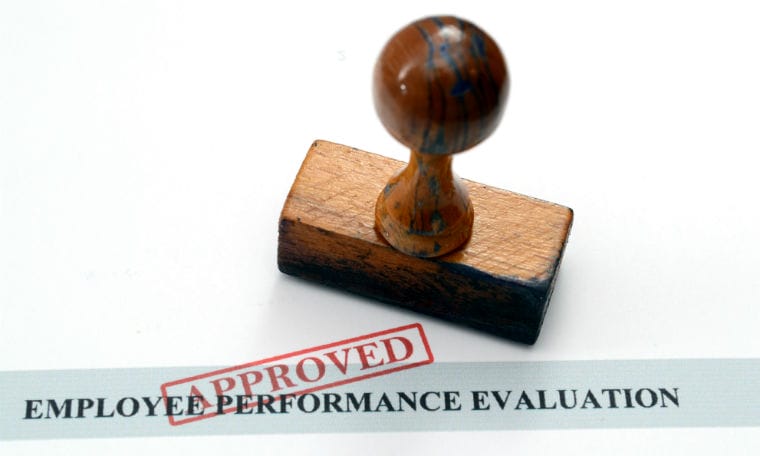
Despite the Bureau of Labor Statistics reporting that 10.7 percent of all wage and salary workers in the U.S. are union members in both the private and public sector, union membership of public sector employees at the federal, state and local levels is well above that at 34.4 percent.
Just in local government, the rate of union membership is 40.1 percent and includes teachers, police officers and firefighters. In contrast, only 6.5 percent of private sector employees belong to unions. That number is significant because average private sector compensation costs average $34.19 per hour, compared to an average of $49.23 per hour in state and local government — a 30 percent difference in private to public employment costs.
So how do public sector unions achieve such important gains when some of these same unions don’t have the ability to strike? First, let’s take a quick history lesson.
The New York state Legislature was one of the first states to pass labor laws protecting women and children. Labor unions continued to gain strength in the subsequent decades, resulting in the passage of the Railway Labor Act in 1926, allowing railroad employees to unionize, and the 1935 National Labor Relations Act, which guaranteed basic rights of private sector employees to organize into labor unions and encourages collective bargaining — generally defined as the negotiation between an employer and a labor union on issues of wages, hours and working conditions.
Notably, the NLRA did not extend those protections to employees in the public sector for fear that public employees would strike, leading to paralysis of government until their demands were met. In 1943, the New York Supreme Court in Railway Mail Ass’n. v. Murphy, said, “Nothing is more dangerous to public welfare than to admit that hired servants of the state can dictate to the government the hours, the wages, and conditions under which they will carry on essential services vital to the welfare, safety and security of the citizen.”
Please read: Labor Relations in the Public Sector, Part 1
Today, most states have laws that formalize the bargaining process for some or all public employees, and some states permit only “meeting and conferring” on work-related issues. Only 11 states allow public employees to strike. Of those, most prohibit striking for essential employees and in cases where striking would endanger public health and safety.
For example, New York’s Taylor Law grants public employees the right to organize and elect union representatives, but also makes work stoppages punishable with fines and jail time. Some states prohibit collective bargaining for teachers while others prohibit all public sector collective bargaining.
The Power of Public Sector Unions
Without either limited or no ability to strike, public sector unions may try to leverage their power to help elect the very politicians who sit across from them at the bargaining table and influence legislation that affects public employees’ wages and availability of jobs. According to the California Fair Political Practices Commission, the California Teachers’ Association spent more than $211 million from 2000 to 2009 on political campaigning — more than any other donor in the state and as much as the pharmaceutical industry, the oil industry and the tobacco industry combined. In 2005 alone, the CTA spent $54 million to defeat initiatives intended to cap the growth of state spending and make it easier to fire underperforming teachers.
Politicians who attempt to limit the power of public sector unions and their lobbying arms need to come to the table prepared to make realistic changes. A case study of how not to negotiate with a public sector union is the Chicago Teachers’ Union strike in 2012, which was in response to some of Chicago Mayor Rahm Emanuel’s initiatives. Emanuel campaigned to improve the education of Chicago schoolchildren and used his political might to pass an aggressive education-reform bill without consulting the teachers’ union.
The CTU brought other public unions to their cause and engaged in a 10-day strike. After an unsuccessful attempt to get a court order to force teachers back to work, both sides reached an agreement. While Emanuel did get a longer school day and longer school year, the teachers got an average raise of 17.6 percent over four years, health insurance increases, seniority pay increases and raises for additional education.
 In jurisdictions where striking is prohibited, there are ways to reach final resolution of negotiations if parties disagree. These include arbitration, mediation, fact-finding and bargaining without a final resolution mechanism.
In jurisdictions where striking is prohibited, there are ways to reach final resolution of negotiations if parties disagree. These include arbitration, mediation, fact-finding and bargaining without a final resolution mechanism.
In arbitration, a neutral third party facilitates discussions, examines the facts and makes a binding determination. In mediation, the parties agree on a professional who facilitates discussions and proposes solutions that both parties can accept or decline. In mediation/arbitration, the parties jointly choose a mediator and if both parties fail to come to an agreement, the mediator becomes the arbitrator. Fact finding is a labor dispute resolution measure where an independent “fact finder” examines the arguments of both parties and offers a nonbinding resolution. In the public sector, as many state and local governments are in poor financial health, the fact finder generally sides with the employer and finds the unions’ proposals unreasonable to allow the employer to control costs.
Unions strive to secure good outcomes for the employees they represent during the initial stages of negotiations. Allowing a dispute to lead to arbitration takes the decision away from management and labor. Since arbitrators must adhere to certain standards, the awards are somewhat predictable. Generally, arbitrators reach decisions that neither labor nor management view as the best solution. In a world where labor-management cooperation has become so important, having someone with no vested interest in the outcome decide a union and agency’s fate is a poor outcome that can take years for the parties to repair.
It is encouraging to see that some state and local governments and unions are using tools borrowed from the private sector that help lead to voluntary agreements. The following are important methods that increase the likelihood of fair, voluntary agreements:
• Engage employees at the workplace.
• Use interest-based bargaining techniques in contract negotiations, where both sides declare their interests and then work together to draft agreements that align common interests and balance disparate interests.
• Share information and consult with unions on long-term strategies. Since most labor agreements are in effect for at least three years, a government’s labor relations strategy should align with its own short- and long-term financial planning and overall strategy. Given the repetitive nature of the bargaining process, successful labor-management relationships have management communicate with and involve stakeholders regularly, not just during negotiations.
Bargaining involves transparent communication between labor and management regarding terms and conditions of employment. Effective bargaining is usually measured by whether labor and management can reach an agreement without involving a third party. By demonstrating interest in building rapport, exploring alternatives, refusing to put limits on the number of topics for negotiation, and coming to the table with the goal of a solution, management can maximize the chance of a favorable outcome without compromising the operations of government.









 WF: Is employee engagement all about the money?
WF: Is employee engagement all about the money?




 WF: Your book in part is titled HR Warrior. But you also cite the HR weenie. How can it be both ways in one profession?
WF: Your book in part is titled HR Warrior. But you also cite the HR weenie. How can it be both ways in one profession? 
 Tata Consultancy Services has a proven track record of developing leaders internally. Even today, 98 percent of the information technology firm’s current leaders are individuals who have been with the company since graduation.
Tata Consultancy Services has a proven track record of developing leaders internally. Even today, 98 percent of the information technology firm’s current leaders are individuals who have been with the company since graduation.
